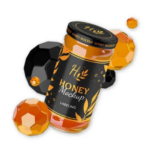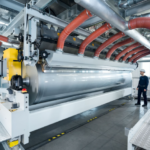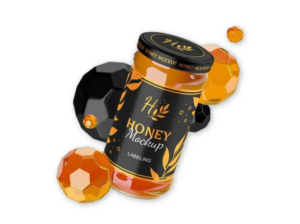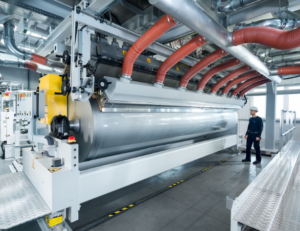Introduction
Biaxially Oriented Polyethylene Terephthalate (BOPET), the oriented version of Polyethylene Terephthalate or PET, stands as one of the most rigid packaging materials out there with exceptional gas and moisture barrier properties. As a result, BOPET films are widely used in the production of bottles and jars for food containers, food trays, and in pharmaceuticals.
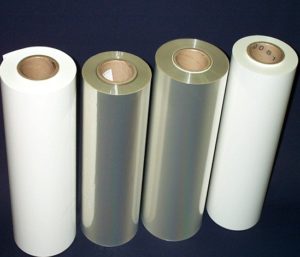
Image Source: https://www.npc.com.tw
Emerging Trends in BOPET Film Industry
Except for the pandemic year where BOPET film demand declined, and sales plummeted throughout 2020, the industry has recovered the losses incurred in 2021. In fact, the BOPET film market is expected to reach $28.4 billion within the next four years, with an estimated compound annual growth rate (CAGR) of 5-7% from 2020 to 2025. With that being said, the industry continues to flourish as emerging trends heavily impact the growth of the BOPET industry.
Technological Innovation in BOPET Film Production
What sets BOPET and other biaxially oriented films apart is the fact that they are processed with minimum material yet provide maximum packaging effect and unsurpassable barrier properties. The coextrusion and biaxial orienting further simplify the process by lowering energy consumption. Still, stretching line manufacturers in the BOPET film industry are always looking for ways to produce even thinner films while still retaining their unique properties. As a result, less material input will yield greater output, improve efficiency, lower cost, enhance flexibility and reliability, produce less wastage, and reduce carbon footprint.
There are two basic technologies in Film Lines used for the production of BOPET and other biaxial oriented films:
- Sequential Film Lines
- Simultaneous Film Stretching Lines
Sequential Film Lines
Sequential film lines make up for the most prominent plastic processing systems for biaxially oriented films, including BOPET. The film lines feature minimum working width of around 5m, but modern, state-of-the-art machines usually have a net width of around 10m. Furthermore, the product speed varies from 150-180m/min with a maximum upper limit of 525m/min. Finally, the output capacity of most sequential film lines averages around 7.5t/h.
What’s more, sequential film stretching lines have typical stretching ratios of about 3×3. However, each component of the film line can be adjusted according to the raw material to produce desired film features. The spindle Method and the Pentagraph Method are the two most common technologies used in the sequential film lines.
In both methods, BOPET film is stretched in two separate steps to allow the film’s longitudinal and transverse stretching. The limited-production speed, width range, and output are the factors that make these processes mechanically complex and require high maintenance.
Simultaneous Film Stretching Lines
While Sequential Film Processing has remained the gold standard in the biaxial orientation of BOPET films, it requires two separate steps and has a limited size and yield range.
This is where Simultaneous Film Stretching Lines come in.
First introduced in 1998, Simultaneous Film Stretching incorporates LISIM (Linear Motor Simultaneous Stretching) technology which uses linear motors to stretch the film longitudinally and transversally at a time. The production speed of this process is exceptionally high, with an upper limit of up to 500m/min. As a result, BOPET films generated with LISIM-Sequential Film Processing have better quality and high up time.
Below are some technical advantages of using Simultaneous Film Stretching Lines:
- Improved film properties
- High flexibility of the stretching ratios in both directions (longitudinal and transverse), allowing manufacturers to vary levels of film thickness.
- The adjustable setting of the relaxation in the longitudinal and transverse directions
- Reduced maintenance cost
- Suitable for most polymers across a wide thickness range
- Suitable for most cleanroom conditions
- Lower production cost
- Reduced energy production
- Superior yield and efficiency
Brückner Maschinenbau is one such example of a Flat Film Extrusion Line used for the production of PET and BOPET. The German company is one of the leading film line providers known for built-in quality with the highest recorded productivity. The Flat Film Extrusion Line by Brückner Maschinenbau uses LISIM technology for producing BOPET food films. In addition, the company has a dedicated LISIM line for BOPET optical film production that uses hot stretch technology for higher speed, increased output, and better optical and mechanical film properties.
Role of Technological Innovation in Recycling
The recent plastic bans have resulted in more stringent regulations in plastic recycling and raised the need to develop more sustainable packaging forms. A new development in the plastic recycling space by Poseidon Plastics Ltd has allocated recycling of 10,000 tonnes of materials every year. This is where the recyclable nature of BOPET comes in.
The good news is, polyester remains to be the most recyclable polymer out there. This single most prominent environmental benefit of BOPET films is the reason why its demand continues to surge over time.
With the newer methods aiming to improve the film properties, reduce energy consumption, and lower carbon footprint, plastic film manufacturers are experiencing higher demands for BOPET films. Traditionally, PET has been recycled by converting its flakes and pellets into spinning fiber used to manufacture carpet yarns, fiberfill, and geotextiles. However, companies are now figuring out ways to level up BOPET recycling in an attempt to contribute towards sustainable development.
The newest development in this area is to enhance the water solubility of films and make them bio-degradable. Industries are actively investing in newer plastic recycling technologies. For instance, pyrolysis and the use of additives can help in making BOPET completely biodegradable. An example of such development is a patented product called ‘Flexzyme’ by UFlex, the global leader in plastic film manufacturing. Flexzyme is developed as a biodegradable enzyme that degrades completely by soil bacteria. The company claims that, to date, Flexzyme is the only commercial technology that can make plastic wholly biodegradable and recyclable.
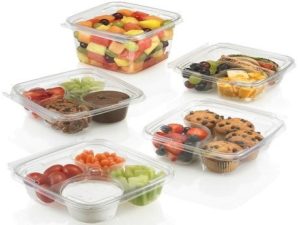
Image Source: https://www.hsqy-plasticgroup.com
Biobased PET Films
Innovated by the sustainability-conscious manufacturers, for the sustainability-conscious consumers, biobased PET films are ultra-thin BOPET films with excellent barrier properties and high transparency. Several big players in the plastic manufacturing industry have come up with their own patented versions of biobased PET films. For instance, FlexFilms is one of the biggest names in the plastic film manufacturing space.
The company has recently come up with a unique line of halogen-free films known as green films. The Biobased PET films manufactured at FlexFilms are super thin and manufactured with minimum wastage.
Likewise, KP Films, the global leader in producing recycled products, has also come up with another remarkable invention they refer to as Bio-Based Rigid Films. One of their patented products is TerraPET, a type of PET film made with plant-based resources, including sugar cane. It’s easy to thermoform and cut and does not require any special handling precautions.
Chemical Recycling of Post-Consumer PET Bottles
Another key technological development in the recycling domain is the chemical recycling process of post-consumer PET bottles. In this process, the bottle flakes are converted into monomers by depolymerization and then transformed into PET resins by polymerase chain reaction. The resins are then used for extrusion into BOPET films.
The BOPET films produced by this method are entirely in line with USFDA and European guidelines and can be used for food packaging. Since there’s always a high collection of PET bottles, this technology can work wonders in plastic recycling and producing high-quality, food-grade BOPET films. Consequently, the development will lead to sustainability, lower carbon footprint, reduced plastic waste, and conserve fossil fuel feedstock. The chemical recycling process of PET bottles has already commenced, and various percentages of PCR PET film are being sold already.
Wrap Up
To date, polyester remains the most sought-after plastic material. BOPET Films have already captured the market, thanks to their unmatched barrier properties, superior clarity, and recyclability. Current trends and technologies in the BOPET film manufacturing space aim at improving film properties, increasing output, minimizing wastage, and enhancing sustainability. Where LISIM film technology has successfully simplified the production process, lowered cost, and improved yield, environmentally-aware big players are still trying their best to improve the sustainability of BOPET films.

